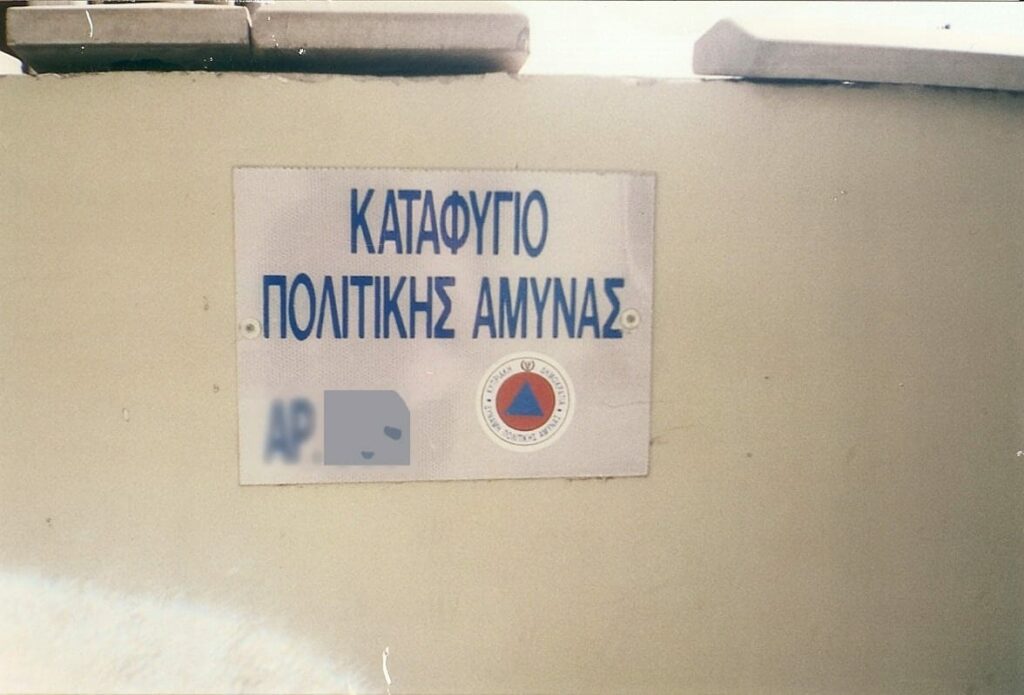Filenews 24 March 2024
In towns and villages, the Civil Defence will seek shelters in order to cover 70% of the population in the coming years, compared to 30% today, almost 50 years after the Turkish invasion.
The issue of increasing the coverage of the percentage of the population was raised by the Minister of Interior Constantinos Ioannou in an earlier meeting with the leadership of the Civil Defence and procedures are already underway for the implementation of the actions agreed to be promoted.
It is noted that the process of shaping the shelters began around 1990 and then relative inertia was observed, while an audit was carried out around 2003. At the moment there are (at least on paper) about 2,200 Civil Defence shelters and it is understood that in order to more than double the coverage of the population to 70% (out of a total of about one million people) about 5,000 shelters are needed.
It is also understood that locating the new shelters will take years.
The spokesman of the Civil Defence, Mr. Panagiotis Liasidis, told "F" that the personnel of the Service will go out, talk to the owners to explain to them the necessity of using their buildings as shelters, so this is definitely not done overnight.
Mr. Liasidis said that in order to cover 70% of the population, the aim is to identify not only shelters in the strict sense of the term but also places of protection in the sense that no additional work is required to be used by citizens in case of emergency.
In this context, an effort will be made to identify any basements of churches or other halls belonging to churches, community and municipal buildings and/or public buildings that meet safety standards.
Emphasis will also be placed along the green line and generally on sensitive (in terms of security) areas.

As Mr. Liasidis explains, another move that is expected to help identify suitable protection areas is the cooperation with the new District Local Government Organizations, in order to inform the Civil Defence about the new buildings that are licensed and which are planned to include basements. The intention of the Civil Defence is to integrate these new buildings into the shelters.
Replying to a relevant question, Mr. Liasidis clarified that if and when some buildings need to be used, their use will be limited to a few hours, until any risk is eliminated, so their owners will not be deprived of them for a long time.
Replying to another question, the Civil Defence spokesman said that a lot of effort is needed to update the shelters and reflect the new reality compared to what was the case 20-25 years ago.
As Mr. Liasidis explains, since then many apartment buildings and houses with basements have been constructed. As part of the reality mapping, checks will continue, given that in some cases both the owners and the conditions of each one change.
For the smoother functioning of Civil Defence, changes are also being promoted, which will transform it into a Department dealing with civil protection, as is the case in the rest of Europe, which implies a reorganization of the service itself.
Civil protection will be based on three main pillars, namely the operational sector, the risk management, statistics, research sector, etc., the administrative sector and, finally, the educational pillar.
The operational pillar will include plans and their monitoring, the administrative sector will include everything from finance and administrative support to staff management and shelters and, finally, the education sector, with all that this entails.
Rescue teams will also fall under the last pillar. It is worth noting that every year about 600 people are prepared to be ready to provide first aid and if we add to them another 250 rescuers as well as 150 volunteers of the Civil Defense, their number rises to 1,000. Due to the fact that about 600 people are trained every year, the number of all those who are able to provide first aid amounts to thousands.
Demand and the "last hole"
The Minister of the Interior asked to be kept informed of the progress made towards the implementation of the goals set.
When the issue of shelters was raised by MP Nikos Kettiros, Mr. Ioannou had explained that they are not "territorially structured".
He added that in old city cores, as a rule, underground spaces are not available, while in areas of beach hotels, there is a plethora of basements.
In the same response, the minister had expressed concern that "the number of shelters is decreasing over time, as owners are asking for them to be removed and used in another way."
As "F" had written, due to both increased demand and the "last hole", many owners are seeking to rent the spaces that had been selected and configured to act as civilian shelters.
